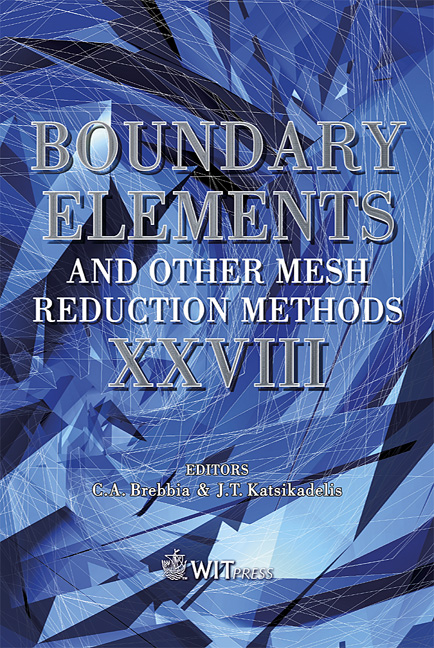Conduction Heat Transfer With Nonzero Initial Conditions Using The Boundary Element Method In The Frequency Domain
Price
Free (open access)
Transaction
Volume
42
Pages
9
Published
2006
Size
575 kb
Paper DOI
10.2495/BEM060151
Copyright
WIT Press
Author(s)
N. Simões, A. Tadeu & W. Mansur
Abstract
The diffusion equation with non-zero initial condition is solved using the Boundary Element Method in the frequency domain. Complex frequencies are used in order to avoid aliasing phenomena and to allow the computation of the steady state response. One numerical example is given to illustrate the effectiveness of the proposed approach to solve diffusion equations in two dimensions. Keywords: transient heat transfer; conduction; Boundary Element Method; 2.5D Green’s functions; frequency domain; Fourier transform; nonzero initial conditions. 1 Introduction Analytical solutions are only known for solving simple problems, while the Boundary Element Method (BEM) can be implemented to deal with general problems. The BEM is an alternative to the Finite Element Method (FEM) and the Finite Difference Method (FDM) for solving physical problems, such as that of heat diffusion (Brebbia et al. [1], Pina and Fernandez [2], Godinho et al. [3]) Most of the BEM implementations to solve transient heat transfer problems are based on either \“time marching schemes” (Chang et al. [4], Shaw [5], Wrobel and Brebbia [6], Carini et al. [7], Lesnic et al. [8]) or Laplace transforms (Sutradhar et al. [9], Sutradhar and Paulino [10], Chen et al. [11]). The Laplace
Keywords
transient heat transfer; conduction; Boundary Element Method; 2.5D Green’s functions; frequency domain; Fourier transform; nonzero initial conditions.





